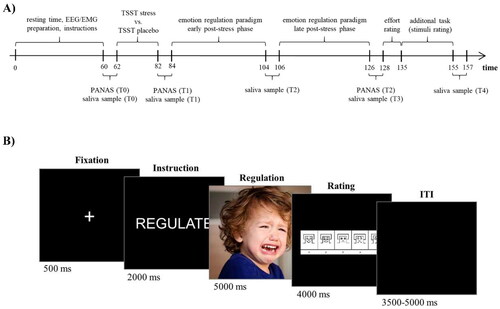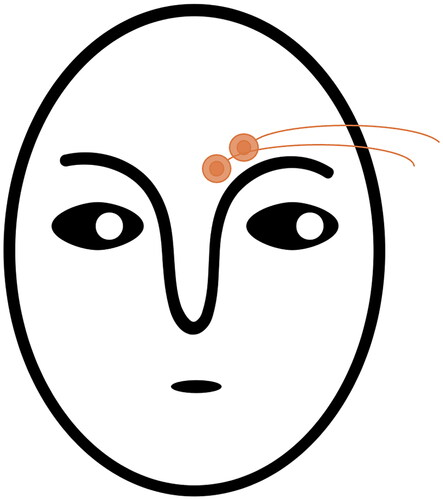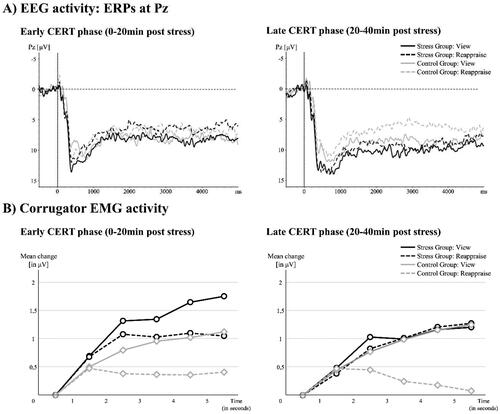Figures & data
Table 1. Descriptive data and statistical indices for sample characteristics as well as stress induction measures and CERT difference scores.
Figure 1. (A) Experimental procedure. (B) Trial Sequence of the Cognitive Emotion Regulation Task (CERT). EEG: Electroencephalogram; EMG: Electromyogram; ITI: Inter-Trial-Interval; PANAS: Positive and Negative Affect Scale; T0-T4: Saliva sampling points; TSST: Trier Social Stress Test.

Figure 2. Schematic depiction of the electrode placement for EMG recording over the corrugator supercilii: one electrode is placed on an imagery vertical line that traverses the inner commissure of the eye fissure; the second electrode is placed 1 cm lateral and slightly superior to the first one (see Fridlund and Cacioppo, Citation1986).

Figure 3. Manipulation Check: Acute stress reactivity assessed with (a) saliva cortisol concentrations, (b) saliva α-amylase concentrations, and (c) subjective PANAS-ratings of negative affect. PANAS: Positive and Negative Affect Scale (Watson et al., Citation1988); S1-S6: saliva concentrations (untransformed). Error bars represent SEM; *α < 0.05.

Figure 4. Time-dependent stress effects on emotion regulation outcome measures (difference scores): (1) Valence Rating (Reappraisal minus View), (2) EEG activity (View minus Reappraisal), and (3) EMG activity (View minus Reappraisal). Error bars represent SEM; *α < 0.05.

Figure 5. (A) EEG activity to the CERT: ERPs (Pz-electrode) for the early and the late post-stress phase. Note that in the late phase, LPP activity differs between view- and reappraise-trials for the control group only, while no such regulation effect was found for the stress group. (B) EMG activity to the CERT: corrugator activity for the early and late post-stress phase. Note, that again in the late phase, corrugator activity differs between view- and reappraise-trials for the control group only, while no such regulation effect was found for the stress group. Note also, that groups did not differ in emotional reactivity (see Supplement). CERT: Cognitive Emotion Regulation Task; EEG: electroencephalogram; EMG: electromyogram; ERP: event-related potential; LPP: late positive potential.

